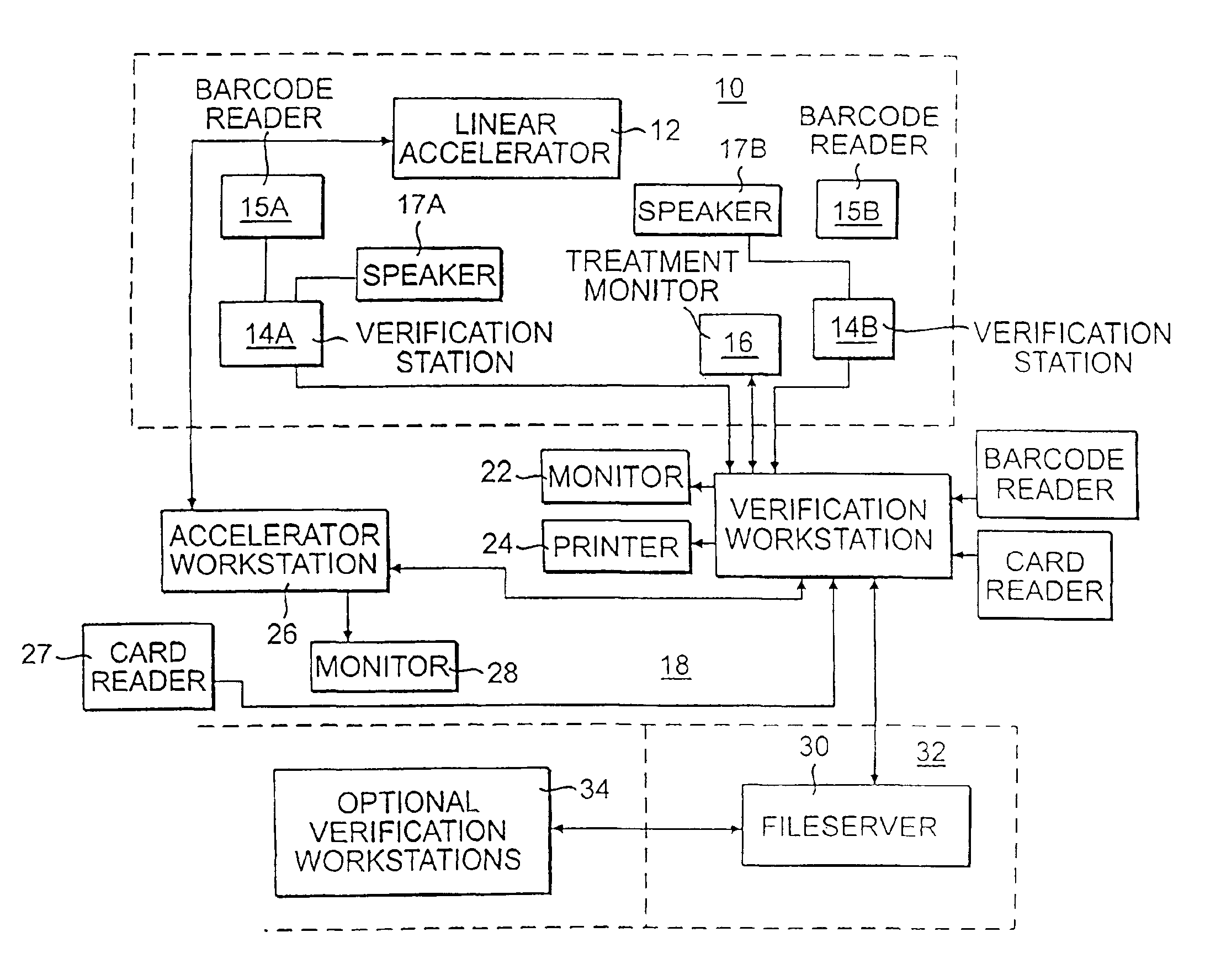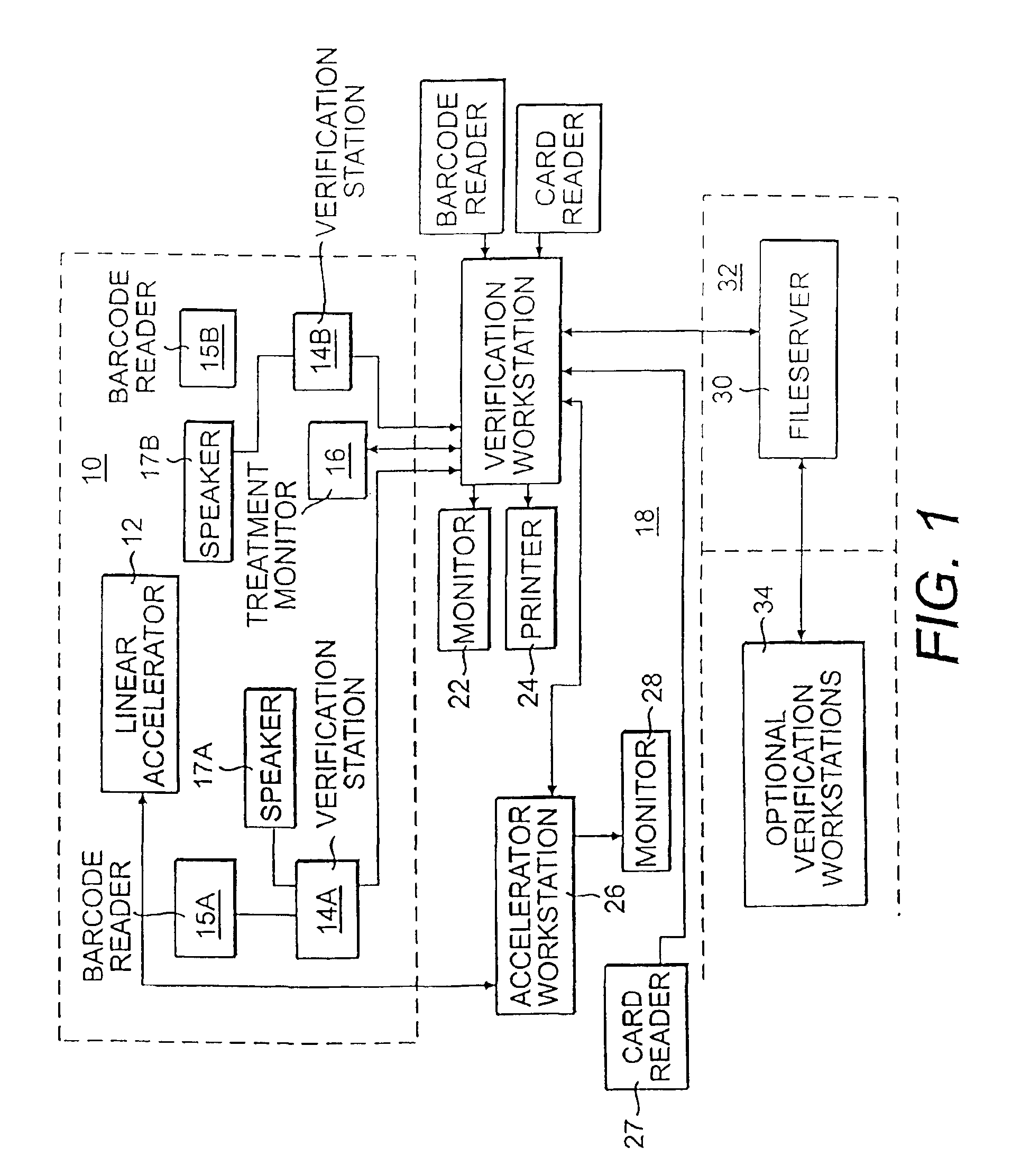Method of patient identifier verification
a patient identification and verification method technology, applied in the field of record and verification system, can solve the problems of physician resistance, affecting the widespread adoption of the technology in the foreseeable future, and reducing the accuracy of the overall treatment process, so as to avoid mismatches between electronic records and paper records
- Summary
- Abstract
- Description
- Claims
- Application Information
AI Technical Summary
Benefits of technology
Problems solved by technology
Method used
Image
Examples
Embodiment Construction
[0043]Referring to FIG. 1, a block diagram is provided of one preferred embodiment of the overall system. A treatment room 10 includes a conventional linear accelerator 12 which administers the radiation treatment to the patient and which may be any conventional analog or digital system. Two laser verification stations 14A and 14B are provided in the treatment room 10 along with a treatment monitor 16. The stations 14A and 14B are identical and each preferably includes a respective barcode reader 15A and 15B and a speaker 17A and 17B placed into a single mountable box (not shown). In a preferred embodiment, the verification stations 14A and 14B are located across the treatment room 10 from each other, just beyond the isocenter in the direction of the maze, with the linear accelerator 12 being located between the stations 14A and 14B. Further, the stations 14A and 14B should be situated so that a first technologist, Technologist A, is able to scan a chart or identification card or ph...
PUM
 Login to View More
Login to View More Abstract
Description
Claims
Application Information
 Login to View More
Login to View More - R&D
- Intellectual Property
- Life Sciences
- Materials
- Tech Scout
- Unparalleled Data Quality
- Higher Quality Content
- 60% Fewer Hallucinations
Browse by: Latest US Patents, China's latest patents, Technical Efficacy Thesaurus, Application Domain, Technology Topic, Popular Technical Reports.
© 2025 PatSnap. All rights reserved.Legal|Privacy policy|Modern Slavery Act Transparency Statement|Sitemap|About US| Contact US: help@patsnap.com



